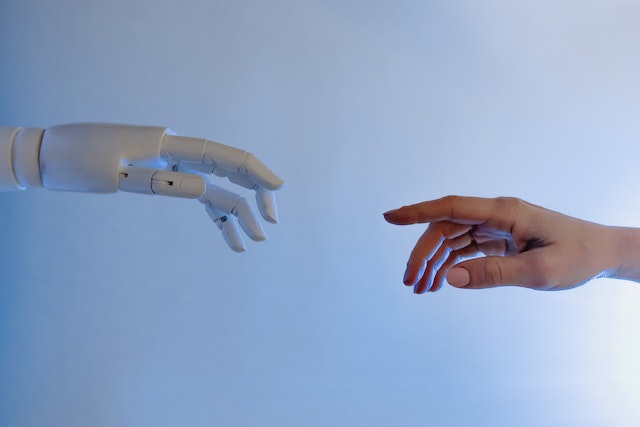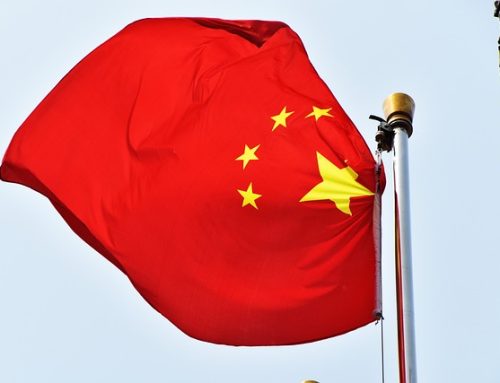June 7, 2023
- The launch of ChatGPT in November 2022 has prompted an intense debate about how artificial intelligence will affect businesses and consumers across the globe.
- Many companies are already using forms of AI or machine learning for various purposes, from automation of manual processes to predicting and fulfilling customer demand.
- Companies must identify and clarify the most profitable use cases in order to determine their future AI investment and development needs.
ChatGPT and generative artificial intelligence (AI) have become a hot topic in the past few months, but consumers and companies alike have been using AI for several years. It is used when Amazon or Netflix provide recommendations, or through the use of voice assistants including Siri or Alexa. This article will look at the way many different sectors and companies are already using AI as part of their daily business processes and offerings.

AI is transforming the future of farming
AI in agriculture is being used to improve agricultural productivity in three major ways: agricultural robotics, soil and crop monitoring and predictive analytics.
John Deere has spent the past few decades investing in technology and robotics to develop and launch the first fully automated tractors at CES 2022. By applying high-quality AI and machine learning training data tailored for agriculture, autonomous tractors can undertake tasks such as cultivating, fertilising, harvesting and planting with minimal human intervention. Monarch Tractor, a US-based start-up, is also developing autonomous tractors, with backing from CNH Industrial.
Another important use for AI is precision farming using predictive analysis. Combined with real-time sensor data and visual analytics data from drones, AI can provide farmers with forward guidance to improve crop yield prediction and to detect pest and disease infections. Recently, PepsiCo (US) partnered with Cropin (India), a software as a service (SaaS) provider, to launch a crop intelligence model for India that used predictive AI analytics to improve the yield of potato.
AI is driving innovation in the automotive sector
AI has a wide range of applications for the automotive industry, from design, production and vehicle maintenance to infotainment and autonomous driving.
AI algorithms, combined with inputs from sensors (including LiDAR) and cameras, can already direct self-driving vehicles within prescribed, self-contained areas. The BMW X5, Tesla Model S, and GM’s Cadillac Escalade now operate at level 2 or 3 of the five levels of autonomous driving. This means they still require full-time driver attention but provide assistance with steering, braking, accelerating and adaptive cruise control. Meanwhile, Cruise (US; owned by GM), Waymo (US; owned by Alphabet) and Pony.ai (China) are among the companies experimenting with level 4 driverless robotaxis in cities from Phoenix, Arizona to Beijing, China.
In terms of manufacturing, AI is used for vehicle design, workflow solutions, and robotics at production lines. BMW (Germany), Toyota (Japan) and GM are among those rolling out machine-vision systems, which use AI for automatic inspection and help detect defective products. AI also powers in-vehicle infotainment systems, enabling navigation, security through biometric recognition and driving monitoring for insurers.
AI has helped to smooth logistics and retailing
Amazon (US) has been using AI for predictive logistics for several years now, having patented the technology back in 2014. The online retail giant analyses customer data in order to predict demand for goods, so that it can prepare and ship products for delivery within just a few hours of purchase. Retailers such as Walmart (US) use AI tools to predict and plan inventory levels, not just by analysing demand but also by scanning pictures and video from store cameras. Consumer companies use AI and geolocation data to improve transparency in their supply chains, for example to meet their sustainability targets; Unilever (Netherlands) uses this to track deforestation.
Another use case for AI (especially generative AI) is in customer service, with many businesses using AI-powered chatbots to address customer queries, or even to take orders or help them shop. However, some retailers struggle to monetise such services; Walmart shut down its experimental AI personal shopping assistant in 2020, three years after launch, for lack of sufficient uptake. AI-powered digital avatars have been more successful. Used in China to replace human online influencers that are subject to government scrutiny, they are particularly popular with Western luxury brands such as Louis Vuitton (France) and Prada (Italy).
AI can improve the resilience of electricity grids
Currently, the main use of AI in the energy sector is for improving grid management and efficiency in an increasingly volatile and flexible grid. As output from wind, solar and hydropower plants fluctuates with the weather, efficient grid management is needed to avoid blackouts. In the US, the Department of Energy has put AI at the centre of its smart grid strategy, while in the UK the National Grid has teamed up with IBM to develop cloud-based analytics. These initiatives allow for real-time monitoring of power grids and the ability to forecast and respond to surges in output or demand.
This flexibility is becoming increasingly important as durable goods are electrified. Electric vehicles (EVs) need a flexible power network, as they are charged from the grid but can also be uncharged into the grid, providing an extra source of electricity. Household appliances are getting electrified and connected to smart meters, leading to more flexible usage. This includes washing machines that turn on automatically when electricity is cheap.
Fraud detection, automated investing dominate financial AI
Firms in the financial industry were early adopters of algorithms and AI, although the sector has arguably fallen behind in recent years. One widespread use is in fraud detection. Visa, Mastercard and PayPal (all US) are using machine-learning algorithms to analyse data on customer behaviour captured over several decades. Such analysis can detect oddities in account activities and identify fraudulent activity in mere milliseconds at any point in the transaction cycle. These systems sometimes generate false positives – blocking genuine customer payments – but they have been successful in reducing fraud.
Another prominent use of AI is in what was once called algorithmic trading, which now relies more on machine learning than on human instructions. Early adopters of these systems often reaped good profits, but risked prompting herd-like behaviour that jolted markets. More recently, investment firms have deployed similar systems for automated investing, or roboadvisors, which can take over tasks such as portfolio rebalancing, tax-loss harvesting and efficient investment of cash holdings. Popular US roboadvisors include Vanguard’s Digital Advisor and SoFi’s Automated Investing bot.
Is AI already in the pink of health(care)?
AI is already being used in healthcare facilities and pharmaceutical industries in several ways, with drug discovery, diagnostics and allocation of resources among them.
Pfizer (US), Genentech (US) and Sanofi (France) are among the companies using AI and machine learning to speed up their R&D efforts. This can be done by trawling through historic research papers and clinical trial data looking for unspotted patterns, or by analysing genetic data from both patients and diseases to generate new insights. This insight helps to develop more personalised and effective drug candidates, with AI also used to design the subsequent clinical trials.
GE HealthCare (US) is among the medtech companies using AI to help with the digitalisation of health services. Its centralised command centres, as used at Johns Hopkins Hospital (US) and Bradford Royal Infirmary (UK), use predictive AI analytics to aid physician decision-making, the management of patient flows and research collaborations.
Diagnostics is another area with potential, with AI used to check patients’ symptoms against possible causes or to analyse scans. Early adopters include Chinese health apps such as Ping An’s Good Doctor and Chinese hospitals, particularly in Shanghai, which wants to become a base for healthcare AI.
Use cases must drive adoption
In all of these sectors, the pandemic has highlighted the need for a digital transformation strategy – and AI is a critical part of that process. The technology is developing rapidly, but it remains important for businesses to understand why they want to use it. That business need will then drive the necessary investment and innovation in the right direction, with fewer missteps.
Source: Economist Intelligence Unit (EIU)
Legal Notice: The information in this article is intended for information purposes only. It is not intended for professional information purposes specific to a person or an institution. Every institution has different requirements because of its own circumstances even though they bear a resemblance to each other. Consequently, it is your interest to consult on an expert before taking a decision based on information stated in this article and putting into practice. Neither Karen Audit nor related person or institutions are not responsible for any damages or losses that might occur in consequence of the use of the information in this article by private or formal, real or legal person and institutions.






